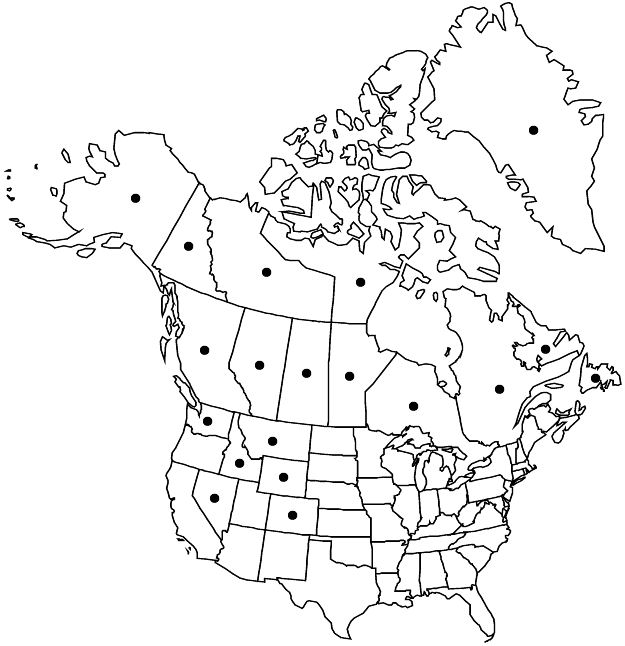Parnassia kotzebuei
Syst. Veg. 1: 951. 1824.
Herbs with caudices. Stems 2–15 (–25) cm. Leaves: basal in rosettes; petiole 0.2–1 (–2) cm; blade (of larger leaves) deltate-ovate to rhombic-ovate 3.5–12 (–30) × 4–10 (–25) mm, base cordate to cuneate, apex acute to obtuse; cauline on proximal 1/2 of stem or absent. Flowers: sepals spreading in fruit, oblong-lanceolate to oblanceolate, 4–8 mm, margins not hyaline, entire, apex obtuse; petals usually 3-veined, oblong to elliptic, 3–7 × 2–3 mm, length 0.8–1.3 times sepals, base rounded or cuneate, margins entire; stamens 3–4.5 mm; anthers 0.7–1 mm; staminodes obovate, unlobed or divided distally into 3–5 gland-tipped filaments, 1.5–3 mm, shorter than stamens, apical glands suborbicular, 0.1–0.2 mm; ovary green. Capsules 6–12 mm. 2n = 18, 36.
Phenology: Flowering summer.
Habitat: Moist or seasonally dry shores, stream banks, riverbanks, meadows, tundra, seepage areas, talus, snowbeds, wet calcareous rocky places, open conifer forests.
Elevation: 0–3800 m.
Distribution

Greenland, Alta., B.C., Man., Nfld. and Labr., N.W.T., Nunavut, Ont., Que., Sask., Yukon, Alaska, Colo., Idaho, Mont., Nev., Wash., Wyo., ne Asia
Discussion
Variety pumila was described as endemic to the western mountains, but identical plants occur throughout much of the range of the species.
Selected References
None.